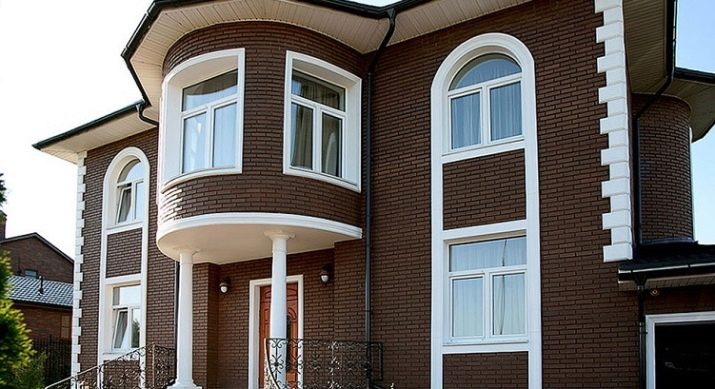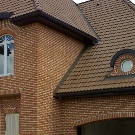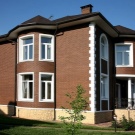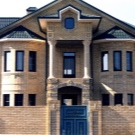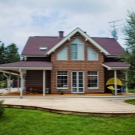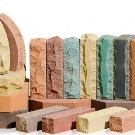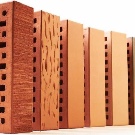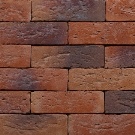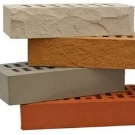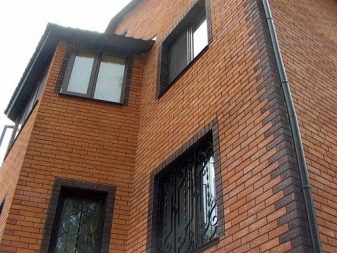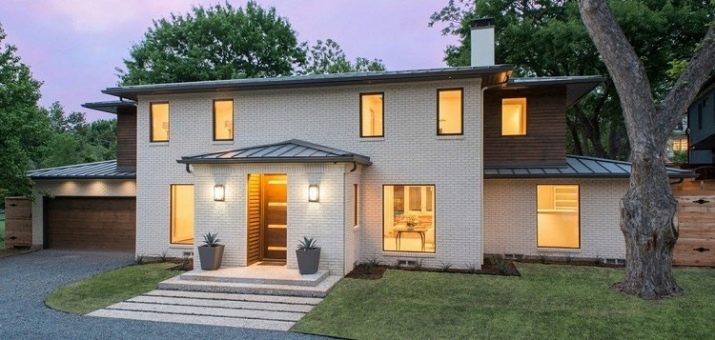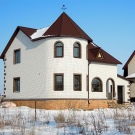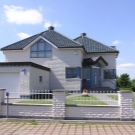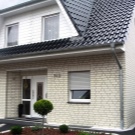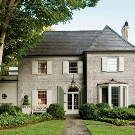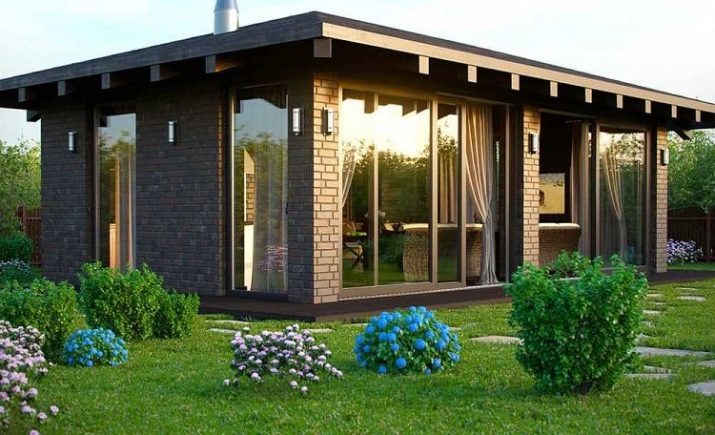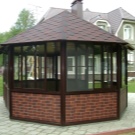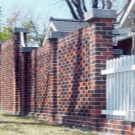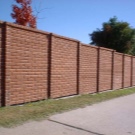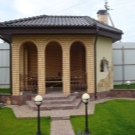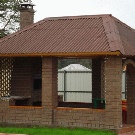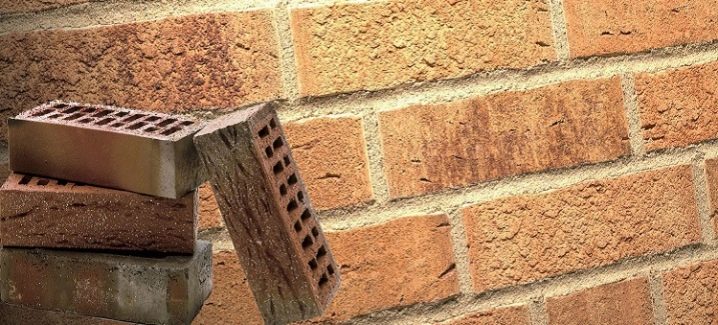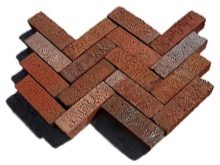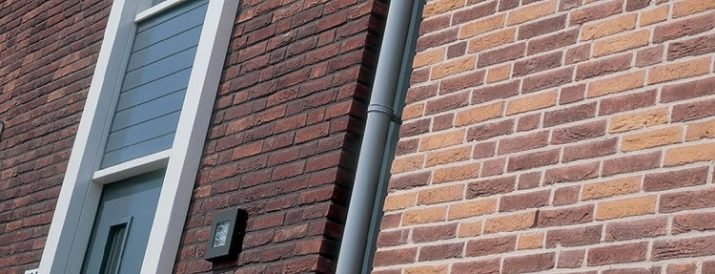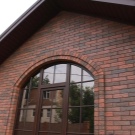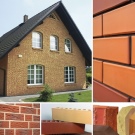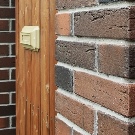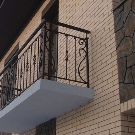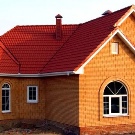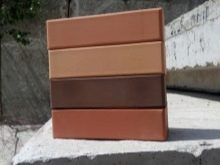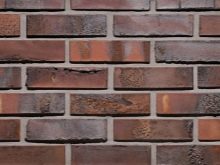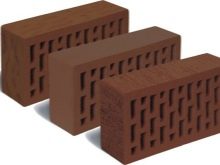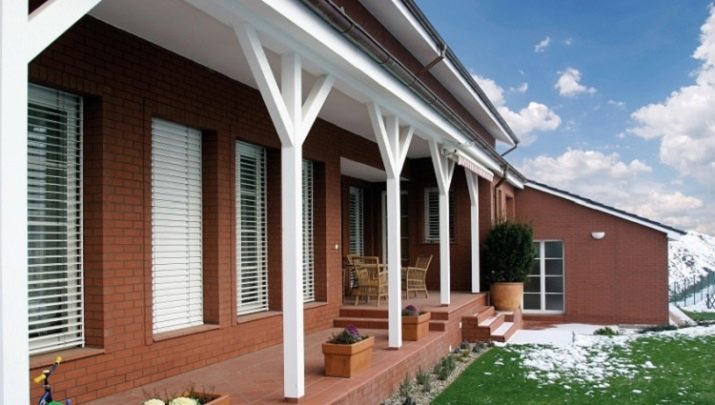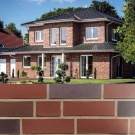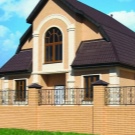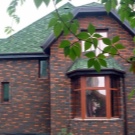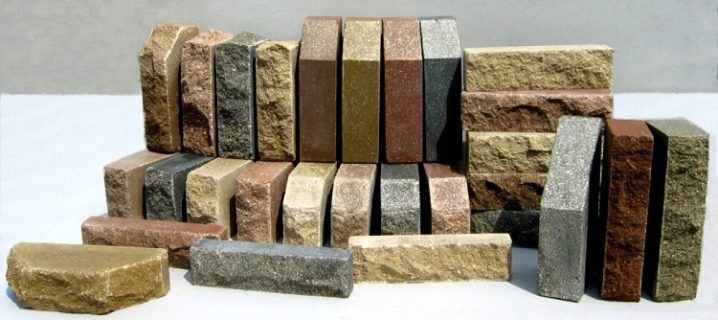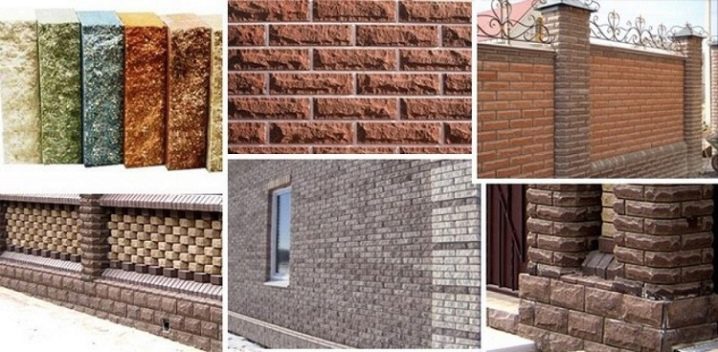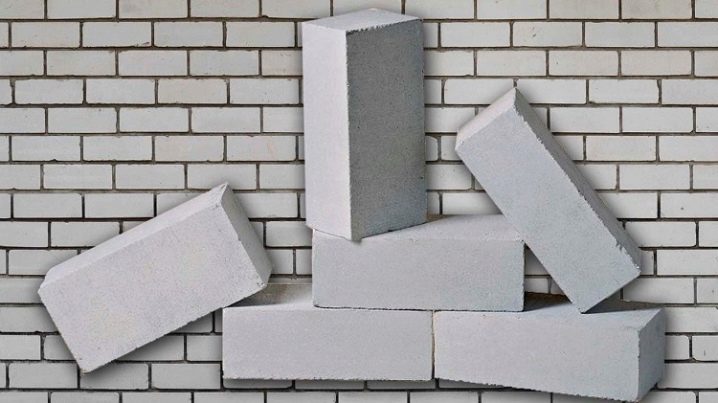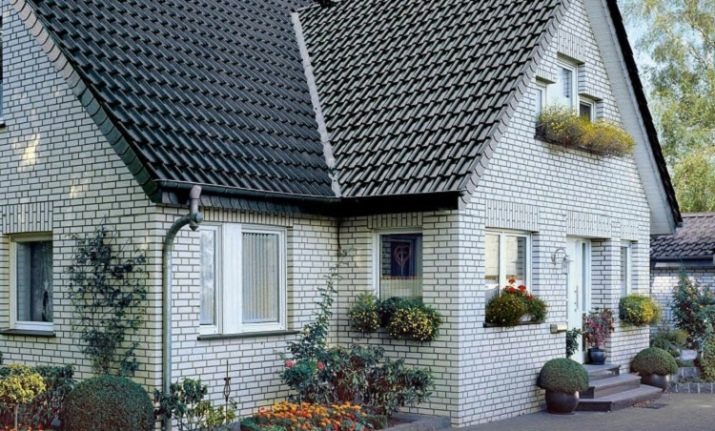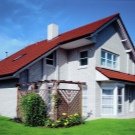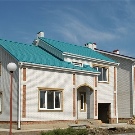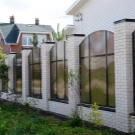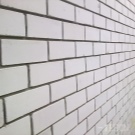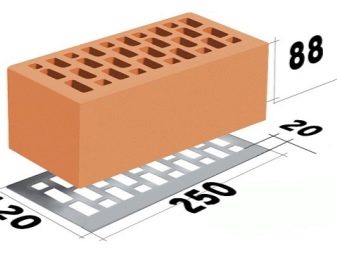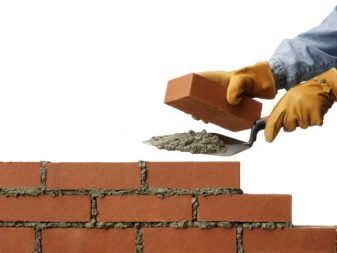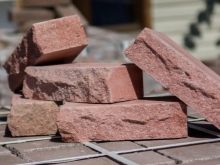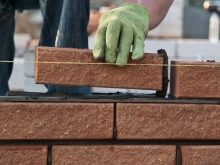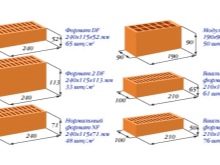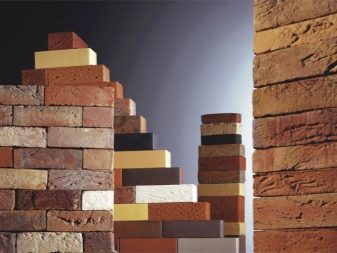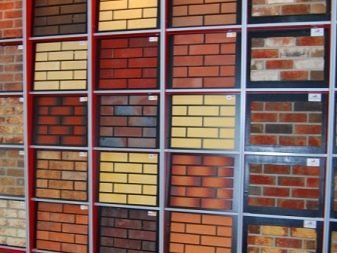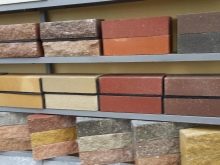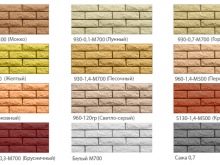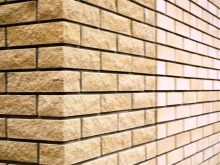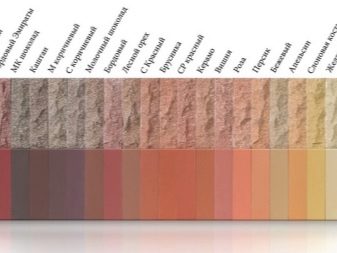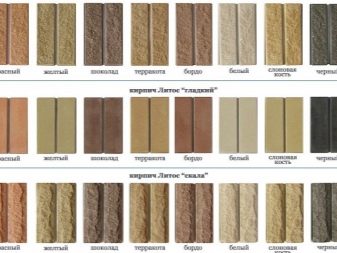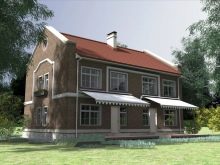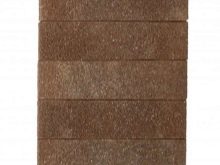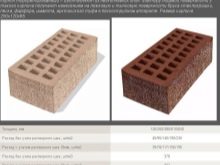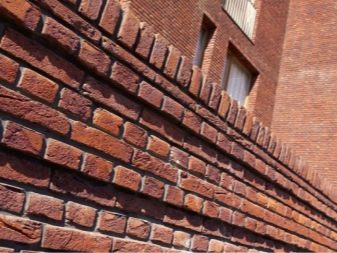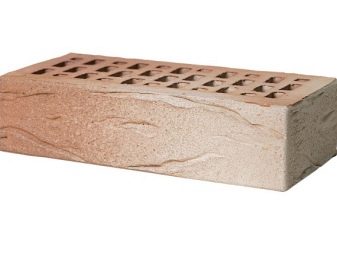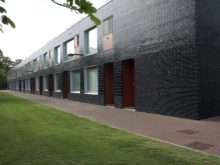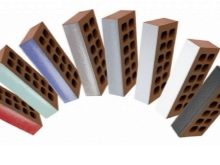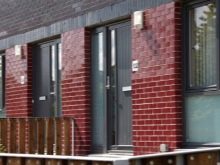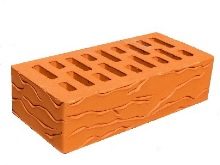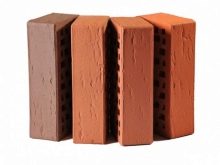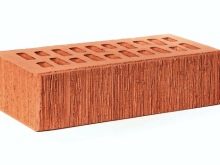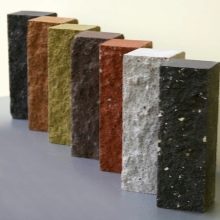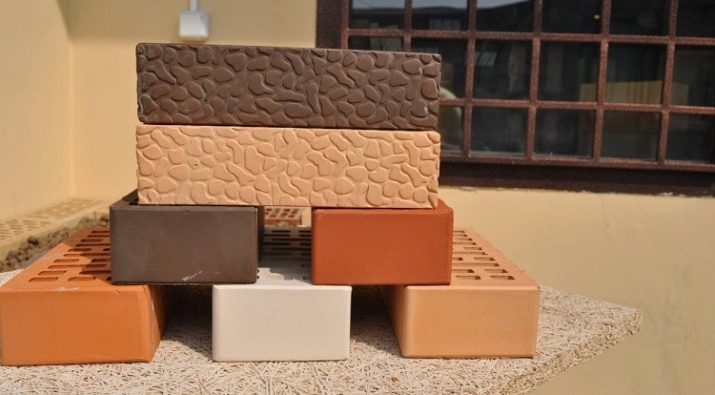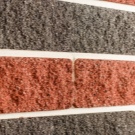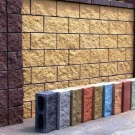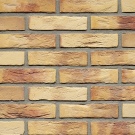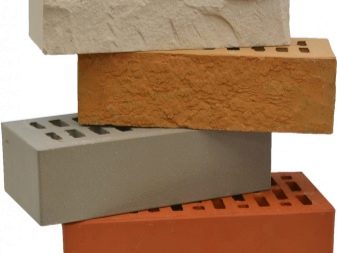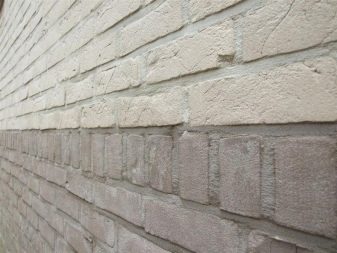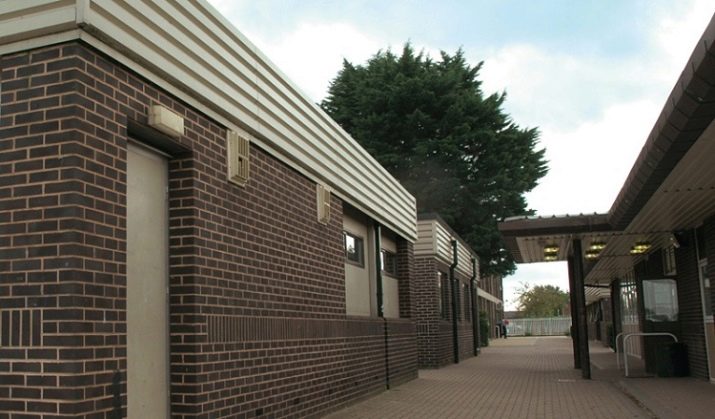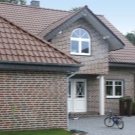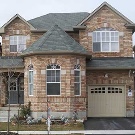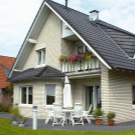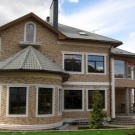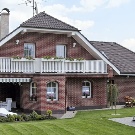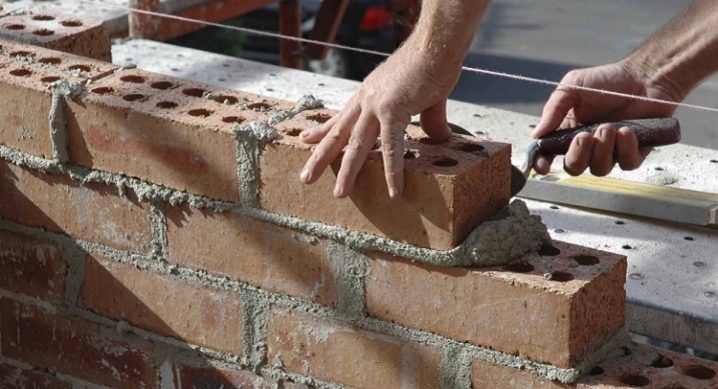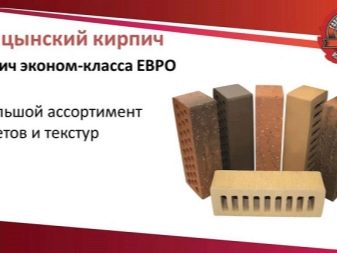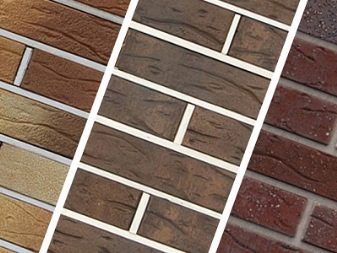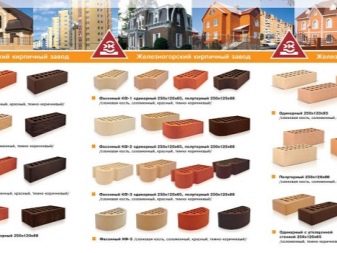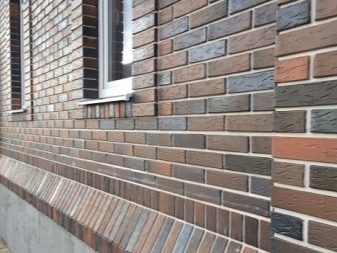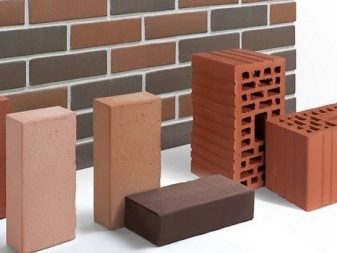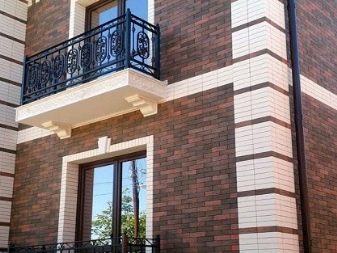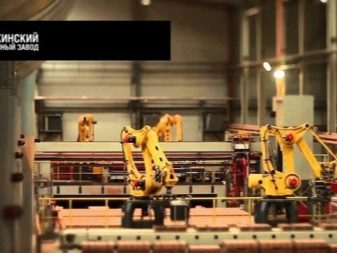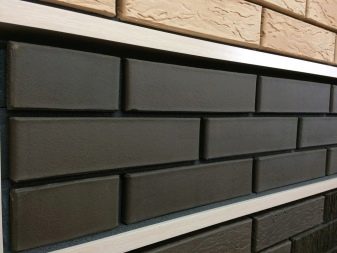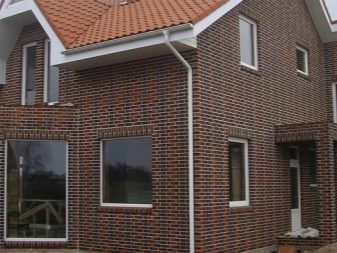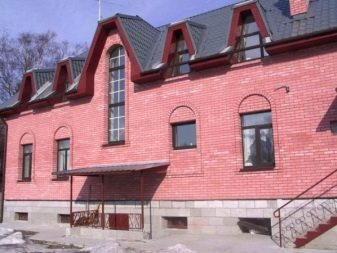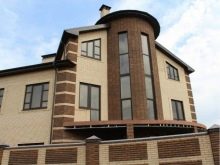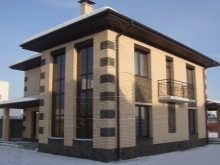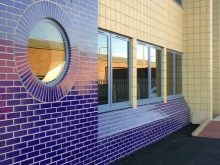Facing brick: types, design and tips on choosing
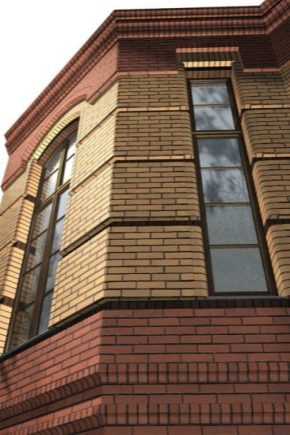
The facing brick possesses fine decorative properties and is widely used for finishing the facades of buildings and interior spaces. The material is available in a wide range, in a wide variety of colors and textures, which greatly simplifies the selection of the desired option and makes it even more popular.
Special features
The facing brick is a universal finishing material, which makes it possible to hide the flaws of the brickwork of the bearing walls, additionally warm the facade and give the building a spectacular and noble look.The house, lined with decorative brick, becomes the center of attention and looks very presentable. The main difference of a front stone from ordinary silicate or ceramic products is the surface texture, color range and composition.
In the role of raw materials for the production of cladding models are limestone, cement and red clay, and additives, plasticizers, pigments and dyes are used as additional components. The presence of certain components, as well as their percentage ratio, is determined by the type of facial stone and the technology of its manufacture.
High consumer demand for cladding material is due to a number of its undeniable advantages. Among them are the high decorative properties of bricks, which is explained by a wide color palette and a large variety of shapes, textures and design. In addition, the lined surface significantly reduces the heat loss of the premises and does not allow extraneous noise from the street to penetrate inside.
The advantages include the high thermal stability of most models, as well as their ability to withstand sudden temperature changes.The facade lined with brick tolerates conditions of high humidity and is not afraid of frequent and prolonged precipitation. Due to the high stability of the face stone to the aggressive environmental conditions, the material can be used in any climatic zones, including areas with a sharply continental climate and northern territories.
However, along with numerous advantages, the material has several disadvantages. The disadvantages include the risk of excessive load on the foundation, the high cost of certain types and the need to use expensive adhesives for lining. The sphere of use of a front brick is rather extensive. In addition to facing the basement and facade, the material is actively used in the construction of fences and columns, as well as for finishing small architectural forms: arches, gazebos and garden and park fences.
The entire facing stone is available in 2 versions: corpulent and hollow. Hollow models weigh 30% less than their full-bodied counterparts and have higher thermal insulation characteristics and lower price. The use of hollow bricks by 15% increases the heat-saving properties of the cladding in comparison with the use of solid products.Therefore, when using full-bodied models as a finish, you should take the necessary measures to additional weatherization of the facade.
Kinds
The classification of facing bricks is made according to its manufacturing technology. In total, there are four varieties, each of which has only its inherent performance and decorative properties.
Ceramic brick
The raw material for the production of this material is red clay. The essence of the method of manufacturing is reduced to the formation through a special press of clay blanks with their further drying and firing in special furnaces. In addition to clay, the material contains mineral additives and plasticizers, which serve to enhance the working qualities of the finished brick. Coal dust, slag, ash and quartz sand are used as such additives. The main difference in the production technology of facing stone is the thorough processing of all components before mixing. On the finished product should not be noticeable foreign inclusions and visible defects.
The surface of the ceramic face products is different. In addition to the matte and glossy design with a smooth texture, the furnace method of manufacturing allows you to get relief models with imitation of natural stone. The color palette of pottery is also varied. Mineral components are used as dyes, such as chromium oxide, finely ground iron or manganese ore, and various pigments.
The absence of toxic and toxic components, as well as the natural origin of the main raw materials, make the ceramic stone completely safe and environmentally friendly and can be used not only for exterior but also for interior decorating. In addition, ceramics do not absorb moisture and are breathable, ensuring the ability of the material to "breathe" and eliminating the risk of fungus and mold.
The advantages of ceramic cladding include absolute fire safety, high sound-proof qualities, resistance to temperature fluctuations, ease of installation and the presence on the market of a huge range of ceramics for any wallet and taste. The disadvantages include a fairly high cost and the likelihood of purchasing low-quality products.The latter is caused by a violation of the technology of kneading and firing clay, due to which the stone becomes quite fragile and ugly.
To protect yourself from the purchase of defective material, you must use the services of proven suppliers who purchase products from reliable manufacturers.
Clinker brick
Clinker bricks are a variety of ceramic and are also made from clay. Its main difference from conventional ceramic bricks is the quality of the raw materials and the firing temperature. The basis of the clinker products is refractory clay, and heat treatment occurs at very high temperatures, reaching 1200 degrees. Brick made in this way is distinguished by increased density and minimal water absorption. This allows the use of clinker material, not only for the design of the basement and cladding of facades, but also for paving sidewalks, paths and bridges.
Clinker brick copes well with aggressive environmental influences and is able to withstand up to 100 freeze-thaw cycles, which makes it one of the most durable facing materials.The undoubted advantages of clinker products include low hygroscopicity, resistance to fading in the sun, excellent thermal insulation properties and high decorative features. The disadvantages include a large enough weight of products, which significantly increases the load on the foundation, and high thermal conductivity. In addition, the adhesive properties of clinker are not very high. This is due to poor absorption of the material, because of which the application of adhesives and putty compounds is very difficult.
Hyper pressed stone
Hyper pressed stone is produced by unburned pressing. A mixture of granite sifting, shell rock, cement and water is used as a raw material for its manufacture. In terms of its structure and composition, the material is concrete of particular strength, made in the form of a brick. Due to the increased strength and excellent weather resistance, the hyper pressed stone is an ideal option for exterior design and in its operational properties is not inferior to clinker products.
Externally, hyperpressed brick is very similar to natural stone and looks spectacular in masonry.In the process of making concrete solution is easily mixed with a variety of dyes and is present in the market of finishing materials in a wide color palette.
However, along with obvious advantages, concrete still has disadvantages. The disadvantages include the likelihood of cracking, which is caused by the temperature expansion of the material, as well as the loss of color that is more and more noticeable over time. In addition, the concrete stone has a sufficiently large weight, which causes an additional load on the foundation and supporting structures.
The disadvantage is low vapor permeability, which requires additional measures to ensure the ventilation of the facade.
Silicate brick
Silicate brick was especially popular at the end of the last century. They lined the old wooden buildings, giving them an unrecognizable appearance and prolonging life. The material was notable for wide consumer availability and low price. To date, silicate brick has given way to the championship of more modern facing materials and has become less and less used as a finishing material.This is due, first of all, not too expressive decorative qualities of products and a rather large weight.
The main types of raw materials for the production of silicate are slaked lime and quartz sand. The manufacturing technology of the material consists in forming blanks with their subsequent placement in special autoclaves, where the composition hardens under the influence of high temperature and pressure. The advantage of the front silicate brick is a high index of frost resistance, which allows the material to easily transfer over 75 freeze-thaw cycles without loss of integrity and working qualities.
In addition, the brick is absolutely harmless to human health, due to the absence in its composition of toxic additives and synthetic dyes. There is also a high biological resistance of the material before exposure to mold and mildew. In addition, silicate is not interesting for rodents and insects, perfectly soundproofed room and is compatible with all types of solutions. The advantages also include low cost, ease of installation, clear geometric shapes and standard sizes.
The disadvantages of silicate models include high permeability, reaching 8%, increased thermal conductivity and too much weight. Full-bodied models weigh almost 30% more ceramic and require a solid foundation and strong walls.
Dimensions
The dimensions of each type of facing brick are strictly stipulated by the norms of the state standard and are always spelled out in the accompanying documentation. This greatly facilitates the calculation and purchase of the right amount of material. The norms of a single standard were defined in the first half of the last century, namely in 1927, and have remained unchanged since then. The standard applies to both ordinary construction and facial models, and has the following meanings: the dimensions of a silicate and ceramic single stone are 250x120x65 mm, double - 250x120x138, thickened or one-and-a-half - 250x120x88 mm.
However, GOST provides non-standard options, the most popular of which are narrow 0.7NF marking products, the size of which is 250x85x65 mm. The one and a half version of such copies has dimensions of 250x85x88 mm. These products are used in the restoration of old buildings, allowing to significantly reduce the load on their foundation.The dimensions of the clinker brick are somewhat different from the size of silicate and ceramic, and in addition to the standard 250x120x65, they have variants 250x90x65 and 250x60x65 mm. As you can see, only the height of the product changes, and the length with the width remains the same. An exception is the elongated model with dimensions of 528x108x37 mm, which is more than twice as long as the base variants.
Unburned hyperpressed brick is also available in four sizes: 250x120x65, 250x90x65, 250x60x65 and 250x120x88 mm. In addition to the Russian GOST, the European standard is widely represented on the market, in which there are 2 categories: NF and DF. The NF index denotes products of the traditional format with a size of 240x115x71 mm, while the DF includes thin models corresponding to the architectural classics with dimensions of 240x115x52 mm. In order to avoid problems with ligation of seams when facing the facade it is recommended to purchase products of only one of the standards.
Standardization of sizes allows you to calculate the required amount of material for facing a certain areaand also calculate the weight of the cladding. So, for finishing one square of the surface, 61 single (25x12x6.5 cm), 45 one-and-a-half (25x12x8.8 cm) and 30 double bricks with a size of 25x12x13.8 cm are required.However, these calculations are excluding seams. Taking them into account, the required number of products will look like 51, 39 and 26 pieces, respectively.
Facing weight is calculated individually, taking into account the type of material and its thickness. The weight of single models starts from 1.7 kg, while double full-bodied silicate products can reach 6 kilograms.
Color palette
The modern market of facing materials represents a huge amount of brick colorings. Ceramic models are presented mainly in red and brown tones, but the variety of their shades is so huge that it is not difficult to choose a material for every taste. But despite the great variety of color solutions, many consumers prefer natural, without the use of dyes and pigments, the color of clay.
However, when choosing products of natural colors you need to be very careful. The bricks of different batches often differ from each other, which is very noticeable on the facade and spoils its appearance. The difference in color is due to the quality and ratio of additives used in the mixing of clays, as well as a violation of the firing technology.
Hyper pressed bricks differ, perhaps, in the widest color palette. The material is painted in the desired colors by adding dyes and pigments. This technology allows to achieve the same even color throughout the volume of bricks, and subject to the necessary proportions of the dyeing components, makes products from different batches absolutely indistinguishable in color.
Concrete products of peach and beige colors, as well as models of straw, ivory and light chocolate are in special demand. Black and white bricks also look good on the facade, and lovers of non-standard solutions will be able to appreciate the Bordeaux, terracotta and green shades.
Coloring silicate bricks produced on the same principle as the concrete. Pigment or dye using a special dispenser is added during mixing. However, it is worth noting that colored bricks are somewhat inferior in strength to unpainted silicate. This is due to a significant proportion of paint in the total volume of raw materials, and in order to avoid reducing the performance of the material, many manufacturers paint only one of its sides.The most popular colors of silicate brick are white, yellow and pink.
Shapes and textures
The surface of the facing brick also affects the overall appearance of the facade. And if silicate models have a mostly flat surface, then ceramic and clinker products are represented in a wide variety of textures and reliefs. Drawing figure figure produced at the stage of formation of blanks, and then send them to the furnace. In total there are five technologies for decorating bricks.
- The method of gunning is applied to the raw clinker models of decorative chips. Then the blanks are sent for firing, and the mineral crumb is sintered with the edges of the brick and forms an interesting texture.
- The engobing technique consists in applying a liquid ceramic mass to the surface of bricks dried before firing. Next, the product is sent to the oven and acquires a thin ceramic coating resembling a glassy film at the exit.
Sometimes ceramic mixtures are applied not to the whole billet, but only to its individual sections, resulting in smooth color transitions that attract attention with their unusualness.
- The method of glazing is to apply a special composition based on glass powder on the unfired surface of the brick. Then, the billet leaves for firing and as a result, a vitreous film is formed on its surface that is thicker and stronger than in the previous case.
Glazed models are used not only for facades. The material has found wide application in the lining of furnaces, columns and decorating the interior.
- The technique of textured deposition consists in forming the desired pattern or pattern on wet blanks with their subsequent firing. This method is used in the design of the surface of the stone antique and to create an imitation of various textures.
- Chipped or rusted brick is obtained as a result of mechanical processing of surfaces that mimic the cleaving of a natural stone. Products look very natural and from a certain distance are visually indistinguishable from the prototype. Popular colors of stab models are shades of gray and brown.
Along with traditional models of facing bricks, shaped, or, as it is also called, shaped stone is in great demand.The material is produced in a wide variety of shapes and colors and is used for lining complex architectural elements, such as columns, wood stoves, arches and gazebos. Figured products are able to combine dissimilar surfaces and are indispensable when facing fireplaces and doorways.
How to choose?
The main criterion for the choice of facing bricks is the ability of the foundation to additional weight load. Usually taking into account the weight of the supporting structures, roofing and cladding are calculated at the design stage, however, if you have to finish the finished structure, you need to raise the documentation and see the performance characteristics and the allowed load on the foundation.
If the basis of the house are reinforced concrete blocks, then you can buy a brick based on personal preferences. But when facing old houses with a strip foundation, it is better to opt for hollow ceramic single models.
The next criterion for the choice of material is its cost. So, the price of one light ceramic stone is 12-20 rubles, while for a one-and-a-half hollow model you will have to pay from 20 to 28 rubles.
The cost of clinker products is slightly higher. A product with a smooth surface of 250x85x65 mm in size will cost not less than 29 rubles, and a model of the same size, but with a corrugated embossing, will cost 35 rubles. Hyper-pressed concrete stones cost the same amount. Smooth models can be purchased for 23-25 rubles, despite the fact that the price of invoices varies from 25 to 30 rubles per brick.
If the funds allocated for facing the house are not very much, then it is possible to dwell on colored silicate models. Their cost with a smooth performance is only 15 rubles. Textured silicate bricks will cost a little more. Their cost is in the range of 24-26 rubles. The most expensive are products of foreign manufacturers, in which the price of a single brick can reach up to 130 rubles.
Manufacturers
To date, many enterprises are engaged in the production of facing bricks in Russia, however, the production of only a few of them has the most positive feedback.
- "Belebeevsky brick factory" Engaged in the production of cladding material for 23 years. The company has its own clay quarry and specializes in the production of ceramic hollow models.During the year the plant produces 60 million bricks and is the leader of the domestic market.
- "Golitsyn Ceramic Products Plant" produces front brick in a wide range. Along with mass production, the company launched the production of exclusive two-color premium-class models, as well as semi-antique relief products.
- "Zheleznogorsk brick factory" It is also well known in the territory of Russia and neighboring countries. The company has existed since 1994, and since its creation has managed to win the recognition of consumers. The capacity of the plant is 40 million pieces per year, and the range is represented by several dozen models with imitation of velvet, stone and wood fiber pattern. In addition, the company produces a huge amount of shaped solid bricks, as well as hollow convex and figured.
- "Kirov brick factory" produces up to 100 million pieces of silicate facing bricks of different shades. The company has established the production of hollow and solid products with a relief surface and the effect of chipped brick.
- Markinsky Brick Factory also has its own quarry and is engaged in the production of environmentally friendly facing bricks. Unique grades of clay allow you to make products without the use of pigments and dyes, while receiving models with smooth and deep color. The company uses high-tech foreign equipment and an electronic control system for each batch.
Manufactured products have both smooth and relief surface, made in the form of a reef texture, reed or rock. The plant capacity is 65 million units per year.
Beautiful application examples
The modern market of facing materials offers a huge range of facing bricks. A large variety of colors and textures greatly facilitates the selection and allows you to implement the most daring design decisions.
- The clinker brick on the facade looks elegant and noble.
- Inexpensive, but aesthetic silicate brick finish.
- The wide color palette of hyper-pressed products acts fascinatingly.
- Ceramic stone facing the facade looks stylish and modern.
- Facing brick with the effect of glazing is very harmonious in the exterior decoration of public buildings.
How to put a facing brick correctly, see the following video.
